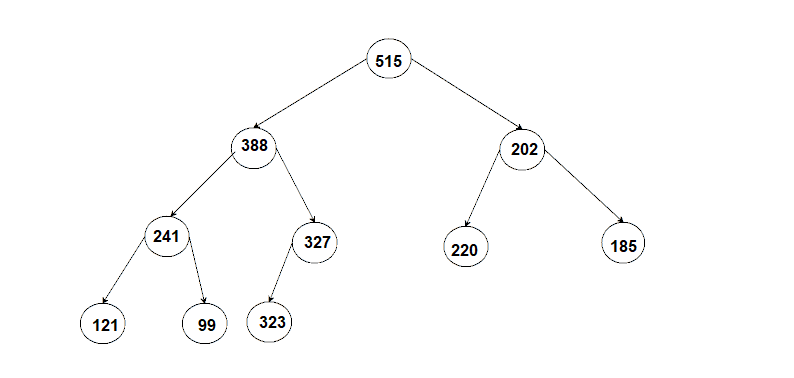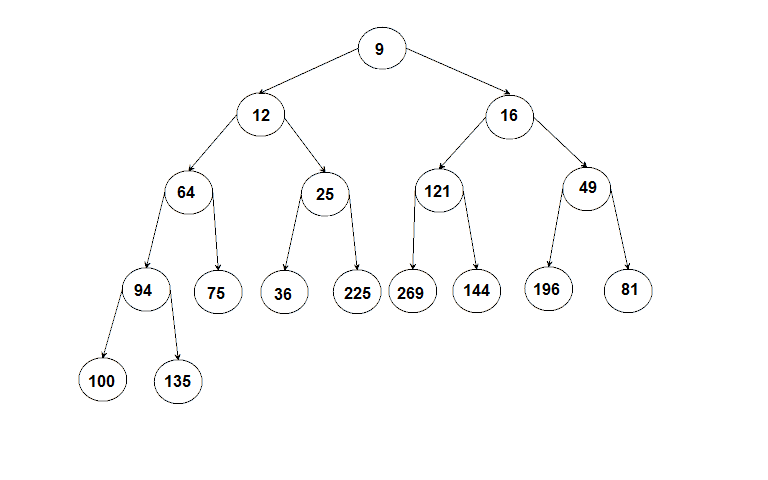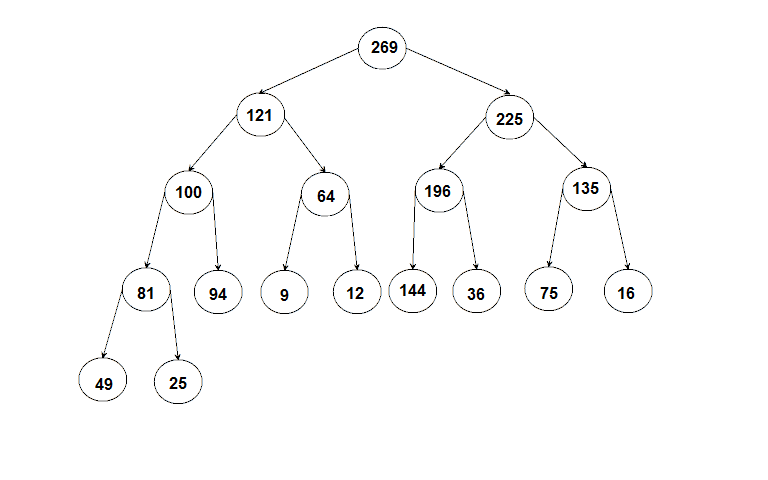- For each of the following, tell whether it's a minheap, a maxheap, or not
a valid heap. If it's not a heap, explain why.





- Build a minheap from the following values. Show the heap after inserting 5 values,
10 values, 15 values, and after inserting all values.
64 25 81 36 16 144 9 100 75 12 225 269 121 196 49 94 135
- Build a maxheap from the following values. Show the heap after inserting 5 values,
10 values, 15 values, and after inserting all values.
97 59 31 144 49 81 256 36 16 169 55 121 269 25 100 64 86
- Build a maxheap from the following values. Show the heap after inserting 5 values,
10 values, 15 values, and after inserting all values.
100 50 300 150 75 125 25 400 250 200 350 175 65 225 425 115 275 375 185 90
- Build a minheap from the following values. Show the heap after inserting 5 values,
10 values, 15 values, and after inserting all values.
150 50 300 100 225 75 400 275 200 25 125 350 250 175 90 425 375 115 185 65
- Remove 8 values from the following heap (remove the root each time). Show the heap
after each value is removed.

- Consider the heap from the problem above. Show how it will be stored in
an array. Use the heap as shown, not after you deleted from it.
- Remove 8 values from the following heap (remove the root each time). Show the heap
after each value is removed.

- Consider the heap from the problem above. Show how it will be stored in
an array. Use the heap as shown, not after you deleted from it.
- Given the following heap:
360 305 275 242 290 260 150 99 175 230 140 180 250 120
[0] [1] [2] [3] [4] [5] [6] [7] [8] [9] [10] [11] [12] [13]
- What is the left child of 242?
- What is the right child of 260?
- Does 150 have a left child? If so what is it?
- Does 150 have a right child? If so what is it?
- Draw the heap
- Show the array from problem 9 after one pass of heapsort (move one element to the
end and then perform siftdown).
- Show the array from problem 9 after a second pass of heapsort (move one element to the
end and then perform siftdown).
- Show the array from problem 9 after a third pass of heapsort (move one element to the
end and then perform siftdown).
- Show the array from problem 9 after a fourth pass of heapsort (move one element to the
end and then perform siftdown).
- Show the array from problem 9 after a fifth pass of heapsort (move one element to the
end and then perform siftdown).
- Show the array from problem 9 after a sixth pass of heapsort (move one element to the
end and then perform siftdown).






